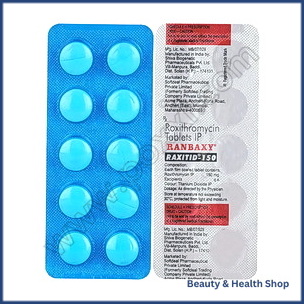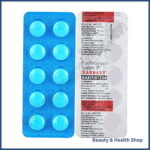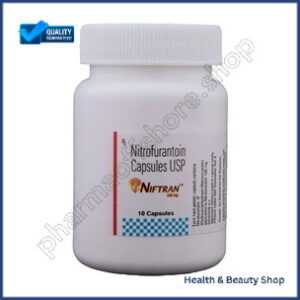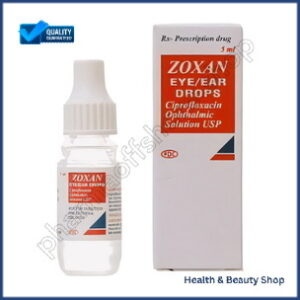ADDICTION
ALCOHOL DEPENDENCE
QUIT SMOKING
ALLERGY
ANTI FUNGAL
FUNGAL INFECTION
FUNGAL NAIL INFECTIONS
ANTI-REJECTION DRUGS
ANTI WORM
ANTIBIOTIC
BACTERIAL INFECTIONS
ARTHRITIS
GOUT
OSTEOARTHRITIS
RHEUMATOID ARTHRITIS
BLOOD
LOW PLATELET COUNT
THROMBOPHLEBITIS
VARICOSE VEINS
COLON
ANAL FISSURE
PILES
ULCERATIVE COLITIS
DIABETES CARE
DIABETES INSIPIDUS
DIABETES TYPE
DIABETIC FOOT ULCERS
GLUCOSE MONITOR
EYES/EAR CARE
DRY EYES
EYE CARE
EYE EXAMINATION
EYE INFECTION
EYE LASHES
EYE PAIN
GLAUCOMA
OCULAR HYPERTENSION
UVEITIS
FEVER CARE
MALARIA
RHEUMATIC FEVER
TYPHOID FEVER
GASTROINTESTINAL
ACIDITY
CONSTIPATION
CROHN'S DISEASE
DIARRHOEA
GALLBLADDER STONES
INTESTINAL ULCERS
IRRITABLE BOWEL SYNDROME
MOTION SICKNESS
NAUSEA
Raxitid 150 mg (Roxithromycin)
| Active Ingredient (Generic Name): | Roxithromycin |
|---|---|
| Indication: | Bacterial Infections |
| Manufacturer: | Sun Pharmaceutical Industries Ltd |
| Packaging: | 10 tablets in one strip |
| Strength: | 150 mg |
From: $36.00
Raxitid 150 mg (Roxithromycin) is a macrolide antibiotic that fights bacterial respiratory tract, skin, and soft tissue infections, including specific STDs. It hinders bacterial protein synthesis by attaching to ribosomes, disrupting their growth. Make sure you complete the full treatment course. Take orally with water, following a dosing schedule. Consider visible reminders. Monitor side effects like gastrointestinal upset, headaches, and skin rash. Seek medical advice for prolonged or severe symptoms. Keep medicines out of reach of children and pets. If you continue, you’ll find more important details about the medication.
When starting to comprehend the benefits of Raxitid 150 mg (Roxithromycin), it’s essential to consider its mechanism of action in the body. Roxithromycin, the active component in Raxitid, belongs to a class of antibiotics known as macrolides. Once taken, Roxithromycin works by inhibiting bacterial protein synthesis, effectively halting the growth and spread of bacteria causing infections in your body.
Upon entering your system, Raxitid 150 mg targets specific types of bacteria by binding to their ribosomes, the cellular structures responsible for producing proteins essential for their survival. By disrupting this process, Roxithromycin interferes with the bacteria’s ability to replicate and multiply, ultimately leading to their demise. This mode of action makes Raxitid effective against a variety of bacterial infections, including respiratory tract infections, skin and soft tissue infections, and certain sexually transmitted diseases.
Understanding how Raxitid 150 mg operates in your body is important in recognizing its role in combating bacterial infections effectively.
Medication’s Positive Effects
To understand the positive effects of Raxitid 150 mg (Roxithromycin), focus on its ability to effectively combat bacterial infections. This medication belongs to a class of antibiotics known as macrolides, which work by inhibiting the growth of bacteria. Roxithromycin specifically targets a wide range of bacteria, making it a versatile option for treating various infections.
When you take Raxitid 150 mg as prescribed by your healthcare provider, it helps in eradicating harmful bacteria causing infections such as respiratory tract infections, skin and soft tissue infections, and urinary tract infections. By targeting the bacteria responsible for the infection, this medication aids in relieving symptoms and speeding up the recovery process.
Moreover, Raxitid 150 mg is known for its effectiveness in fighting bacteria that may be resistant to other antibiotics, making it a valuable treatment option in such cases. Its ability to penetrate tissues and reach high concentrations at the site of infection enhances its therapeutic benefits, leading to successful outcomes in combating bacterial infections.
Why is this medication prescribed?
Raxitid 150 mg (Roxithromycin) is prescribed by healthcare providers to treat a variety of bacterial infections. This medication is commonly used to combat respiratory tract infections, such as bronchitis and pneumonia. It’s also effective in treating skin and soft tissue infections caused by bacteria. Additionally, Roxithromycin can be prescribed for ear, nose, and throat infections, including sinusitis, tonsillitis, and otitis media.
Healthcare professionals may recommend Roxithromycin for certain sexually transmitted infections like chlamydia and mycoplasma genitalium. This antibiotic works by stopping the growth of bacteria, thereby helping your immune system to fight off the infection more effectively. It’s crucial to follow your healthcare provider’s instructions carefully when taking this medication to make sure that you complete the full course of treatment as prescribed.
How should this medicine be used?
To properly use this medication, follow the dosage instructions provided by your healthcare provider for effective treatment of bacterial infections. Raxitid 150 mg (Roxithromycin) is typically taken orally with a full glass of water, with or without food, as directed by your doctor.
It’s important to complete the full course of this medication, even if you start feeling better before the treatment is over. Missing doses or stopping the medication prematurely may decrease its effectiveness and increase the risk of developing antibiotic-resistant bacteria.
If you forget to take a dose, take it as soon as you remember. However, if it’s almost time for your next dose, skip the missed dose and continue with your regular dosing schedule. Don’t double the dose to make up for the missed one.
If you have any questions or concerns about the usage of Raxitid 150 mg, consult your healthcare provider for further guidance.
Other uses for this medicine
Consider discussing other potential applications for this medication with your healthcare provider.
While Roxithromycin is primarily prescribed to treat respiratory tract infections, such as bronchitis and pneumonia, there are other potential uses for this medication.
Your healthcare provider may consider Roxithromycin for certain skin and soft tissue infections caused by susceptible bacteria. Additionally, this medication could be an option in treating certain sexually transmitted infections like chlamydia.
In some cases, Roxithromycin may also be used to manage certain types of ear infections.
It’s important to note that the decision to use Roxithromycin for these conditions should be made by your healthcare provider after a thorough evaluation of your specific medical situation.
Always follow your healthcare provider’s instructions regarding the appropriate use of Roxithromycin for your condition to guarantee its effectiveness and minimize the risk of potential side effects.
What special precautions should I follow?
Before taking Raxitid 150 mg (Roxithromycin), it’s important to thoroughly check your medical history. This medication may interact with certain conditions or medications you’re currently taking.
Be sure to consult with your healthcare provider to determine any specific precautions you should follow.
Check Medical History Thoroughly
Conduct a thorough review of your medical history to identify any conditions or medications that may interact with Raxitid 150 mg (Roxithromycin). When reviewing your medical history, pay particular attention to:
-
Existing Health Conditions: Note any chronic illnesses or conditions you currently have.
-
Previous Allergic Reactions: Recall any past allergic reactions to medications, especially antibiotics.
-
Current Medications: List all medications, including over-the-counter drugs and supplements.
-
Pregnancy or Breastfeeding: Inform your healthcare provider if you’re pregnant, planning to conceive, or breastfeeding.
What special dietary instructions should I follow?
To maximize the effectiveness of Raxitid 150 mg (Roxithromycin), make sure you maintain a balanced diet rich in nutrients while avoiding excessive consumption of fatty foods. A diet that includes a variety of fruits, vegetables, whole grains, and lean proteins can help support your body’s ability to absorb and utilize the medication properly. It’s important to stay hydrated by drinking an adequate amount of water throughout the day to aid in the digestion and absorption of Roxithromycin.
Additionally, it’s recommended to avoid grapefruit or grapefruit juice while taking Raxitid 150 mg, as it can interfere with the medication’s effectiveness. Alcohol should also be limited or avoided, as it may increase the risk of certain side effects. If you have any specific dietary concerns or restrictions, it’s advisable to consult with your healthcare provider or a registered dietitian for personalized guidance on how to best support your health while taking Roxithromycin.
Remember that maintaining a healthy diet is an essential part of optimizing the benefits of your medication regimen.
What should I do if I forget a dose?
If you fail to take a dose of Raxitid 150 mg (Roxithromycin), take it as soon as you recall. However, if it’s nearly time for your next planned dose, skip the missed dose and continue with your regular dosing schedule. Avoid taking an extra dose to compensate for the missed one, as this can heighten the risk of side effects. It’s crucial to uphold a consistent dosing schedule to guarantee the efficacy of the medication in treating your infection.
To remind yourself to take your doses on time, consider setting a daily alarm or placing the medication in a noticeable location as a prompt. If you frequently forget doses, you may find it helpful to use a pill organizer to manage your medication schedule. If you have any concerns or questions about missed doses or the optimal way to handle your medication regimen, consult your healthcare provider for personalized guidance.
What side effects can this medication cause?
Roxithromycin may lead to side effects, some of which could be severe. It’s important to monitor for any prolonged symptoms and seek medical advice promptly if you experience any concerning reactions.
Contact your doctor immediately if you notice any of the symptoms mentioned in the following section.
Monitor for Prolonged Symptoms
Common side effects of Raxitid 150 mg (Roxithromycin) include gastrointestinal upset, such as nausea and diarrhea, as well as headaches and skin rash. To help you understand these side effects better, consider the following imagery:
- Imagine feeling a persistent sense of queasiness in your stomach, making you uneasy throughout the day.
- Picture frequent trips to the bathroom due to diarrhea, disrupting your daily routine.
- Visualize a throbbing headache that lingers, affecting your concentration and comfort.
- Envision an itchy and uncomfortable skin rash developing, causing irritation and discomfort.
If you experience any of these symptoms for an extended period, it’s essential to monitor them closely and consult with your healthcare provider for further guidance.
Some side effects can be serious. If you experience any of the following symptoms, call your doctor immediately:
Be vigilant for any of the following symptoms, as they may indicate serious side effects of Raxitid 150 mg (Roxithromycin) that require immediate medical attention.
- Severe skin rash or itching.
- Yellowing of the skin or eyes, indicating possible liver problems.
- Difficulty breathing or swallowing.
- Irregular heartbeat or chest pain.
If you experience any of these symptoms while taking Raxitid 150 mg, it’s important to contact your doctor promptly. These side effects can be severe and may require urgent medical intervention to guarantee your safety and well-being. Don’t hesitate to seek medical help if you notice any of these concerning signs.
What should I know about the storage and disposal of this medication?
Proper storage and disposal of this medication are crucial to maintain its effectiveness and prevent harm to others. Store Raxitid 150 mg (Roxithromycin) at room temperature away from moisture and heat. Keep it out of reach of children and pets to avoid accidental ingestion. Don’t store this medication in the bathroom or near the kitchen sink, where it could be exposed to moisture. Make sure that the container is tightly closed when not in use.
When it comes to disposal, don’t throw Raxitid 150 mg (Roxithromycin) in the trash or flush it down the toilet. Instead, consult your pharmacist or local waste disposal company on how to properly dispose of unused medications. They can provide guidance on the most environmentally friendly and safe way to get rid of the medication. It’s important to follow these guidelines to protect the environment and prevent others from accidentally taking the medication.
In case of an emergency/overdose
During an emergency or suspected overdose of Raxitid 150 mg (Roxithromycin), immediately seek medical assistance by contacting your local poison control center or going to the nearest hospital. It’s vital to act promptly in such situations to guarantee your safety. If you or someone else has taken more Raxitid 150 mg than prescribed, don’t wait for symptoms to appear before seeking help.
When reaching out to the poison control center or heading to the hospital, be prepared to provide information such as the amount of medication ingested, the time of ingestion, and any symptoms experienced. This information will aid healthcare professionals in giving appropriate treatment.
Do not attempt to induce vomiting unless instructed to do so by medical personnel. Stay calm and follow the guidance provided by healthcare providers. Overdosing on Raxitid 150 mg can be serious, and it’s crucial to receive timely medical attention. Remember, quick action is key in emergencies like these.
What other information should I know?
When considering other important information about Raxitid 150 mg (Roxithromycin), it’s vital to be aware of potential drug interactions. Before taking Raxitid 150 mg, inform your healthcare provider about any other medications, supplements, or herbal products you’re currently using to prevent any adverse interactions. Roxithromycin may interact with certain drugs such as warfarin, theophylline, and digoxin, affecting their effectiveness or increasing the risk of side effects. It’s essential to follow your doctor’s instructions carefully and disclose your complete medical history to guarantee safe usage of this medication.
Additionally, it’s important to finish the full course of treatment prescribed by your healthcare provider, even if your symptoms improve before the medication is completed. Stopping the medication prematurely can result in the infection not being fully treated, leading to a recurrence or the development of antibiotic-resistant bacteria. If you have any questions or concerns about Raxitid 150 mg, don’t hesitate to consult your doctor for clarification and guidance.
Brand names
You may recognize Raxitid 150 mg (Roxithromycin) under various brand names in the market. This medication is available under different names depending on the pharmaceutical company that manufactures it. Below is a table listing some of the common brand names for Raxitid 150 mg:
| Brand Name | Manufacturer |
|---|---|
| Roxid | Alembic Pharma |
| Cadithro | Cadila Pharma |
| Rotramin | Ranbaxy Labs |
Each of these brands contains Roxithromycin as the active ingredient and is used for similar medical conditions as Raxitid 150 mg. It is essential to note that despite the different brand names, the medication’s effectiveness and dosage remain the same. When purchasing Roxithromycin, make sure you are getting it from a reputable source and follow your healthcare provider’s instructions for proper usage.
Purchase Options
Consider exploring different avenues for acquiring Raxitid 150 mg (Roxithromycin) to make sure you have various purchase options available. When looking to purchase Raxitid 150 mg, you can start by visiting local pharmacies or drugstores in your area. These establishments often carry a range of medications, including Roxithromycin, and may offer competitive pricing.
Another option is to explore online pharmacies or reputable websites that specialize in selling pharmaceutical products. Online purchasing can provide convenience and sometimes even cost savings, but make sure to verify the credibility of the website before making a purchase to ensure the quality and authenticity of the medication.
Additionally, consulting your healthcare provider or doctor can be beneficial in guiding you on where to purchase Raxitid 150 mg. They may have recommendations for trusted pharmacies or online sources. It’s important to compare prices, check for any available discounts or coupons, and consider factors like shipping times and return policies when deciding where to buy Raxitid 150 mg.
To summarise
For a thorough approach to purchasing Raxitid 150 mg (Roxithromycin), explore different avenues to guarantee availability and competitive pricing.
Start by consulting with your healthcare provider to obtain a prescription.
You can then buy Raxitid 150 mg from local pharmacies or online platforms. When purchasing online, make sure the pharmacy is reputable and operates legally. Compare prices from different sources to find the best deal while considering shipping costs and delivery times.
Check for discounts, coupons, or savings programs that may lower the overall cost. Verify the product’s authenticity by looking for quality seals and confirming the manufacturer’s information. Be cautious of unusually low prices or suspicious websites to avoid counterfeit or substandard medications.
Prioritize safety and efficacy by buying from trusted sources. Keep track of your medication supply to reorder in a timely manner and avoid interruptions in treatment. By following these steps, you can navigate the purchasing process efficiently and ensure access to the medication you need.








There are no reviews yet.